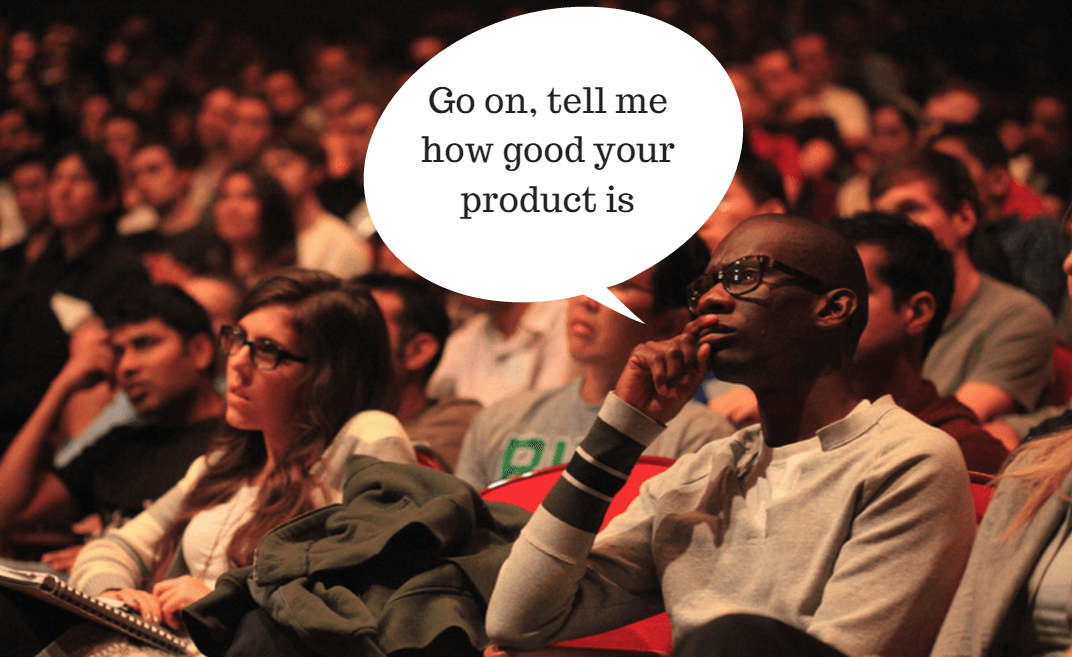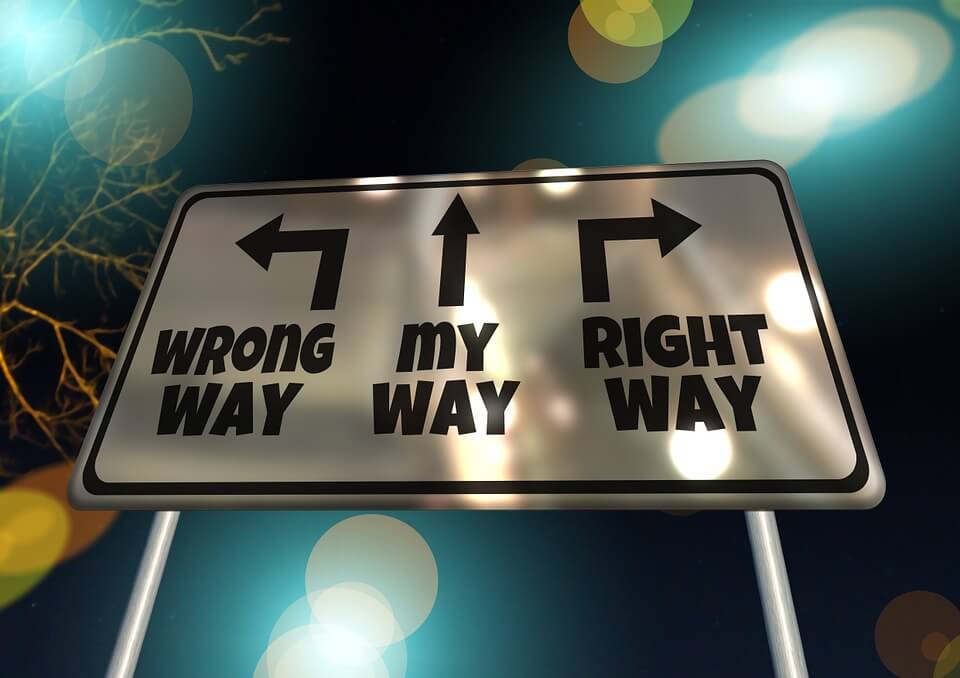Most SaaS businesses go through times when sales go wrong, decrease or just simply fail. Problems connected with SaaS sales process significantly influence companies and their revenues.
The solution in such cases is simpler than it seems – the company needs an effective and working sales process.

So, how can you build one? What influences the SaaS sales process and what should be included in it?
How Can Kraftblick Help Your Software Company?

- We build marketing strategies from scratch and fix existing ones. More about that here.
- We provide consultations to company owners, directors, heads of marketing and sales, marketers. This is how we do it.
See you soon 🙂
This post contains the answers to these questions.
How do Sales Models Affect SaaS Sales Process?
Joel York, founder, and CEO of Markodojo defines three main sales models that are typical for SaaS businesses: customer self-service, enterprise, and transactional models.
All of them greatly affect how a company conducts its sales.
Let’s consider these models in more detail.
- Customer self-service model
For this model a low-priced product, which usually costs tens of dollars per month, is typical. Here the buying, onboarding, and payment processes are completely automated.
This model is what many SaaS businesses are craving for as, in this case, customers can independently estimate the value of the product and service themselves.
Consequently, as the name self-service implies, businesses using this model do not need a sales team. All the responsibility for attracting clients and creating and maintaining awareness of the product falls on the marketing department.
An example of such a company is Atlassian, a provider of collaborative tools such as Jira, Trello, HipChat and others. Atlassian claims to have no sales team at all as they do not want to complicate the buying process for their clients.
Without pitching their products to people, Atlassian has impressive revenue. Atlassian reported that their overall income in the fourth quarter of fiscal year 2016 amounted to $127.6 million.
- Enterprise model
 Source: commons.wikimedia.org
Source: commons.wikimedia.org
Companies with an enterprise model have long sales cycles and a powerful salesforce to sell an expensive product. This type of merchandise usually offers more value to the customer.
For example, Oracle, Passkey, and Netsuite provide products and services that automate multiple business processes. The price on some of their products may vary from $500,000 to $1,000,000 per year.
Furthermore, they target mid-size and large enterprises where budgets and investments are planned only in the fourth quarter of the year. Due to high prices, clients cannot afford to invest large sums of money unexpectedly.
All of this contributes to longer sales cycles.
- Transactional model
This model is a hybrid combination of the previous two types. In comparison with the self-service model, the transactional model usually offers a product at a higher price.
The companies applying this model may introduce lead generation strategies to attract more people. In this case, a small sales team is required to convert the increasing number of leads into paying customers.
The transactional sales model is the most widespread among SaaS businesses.
The most common features of the transactional model are short selling cycles, a high volume of sales, fast onboarding and support operations.
Marketo, Xignite and Zendesk are examples of companies with the transactional model.
What Influences the Choice of A SaaS Sales Model?
 Source: pixabay.com
Source: pixabay.com
Joel York thinks that the average selling price (ASP) is a crucial factor when choosing a sales model for a SaaS business.
ASP limits your customer acquisition cost and that, subsequently, influences the choice of a sales model.
Joel York says,
“High ASP means high risk. The more risk, the more your customers will desire a personal relationship.”
People will not risk their time and money on a product if they do not know its real value. It is a sales manager who delivers this value to potential clients.
How to Organize a SaaS Sales Process?
A sales process is a set of particular repeatable actions that your sales manager performs to convert leads into paying customers.
A well-considered sales process can increase the efficiency of your sales team.
According to a Velocify study, in companies with automated and enforced sales processes, sales managers can meet their quotas at 88%.
Below is an example of how a SaaS sales process may be organized.
- Target customer
First and foremost, the objective is targeting.
The SaaS sales process must be buyer focused. Prospecting is the foundation of any sales process as you need to understand your potential clients’ needs in order to successfully sell your product.
Incorrect targeting may cause problems in further stages of the sales process.
Defining a buyer persona will predetermine the effectiveness of your sales efforts. We have written a comprehensive article concerning this topic. You can read it here.
- Contact prospects
Connecting with prospects is probably the most important stage of any SaaS sales process. This is the real chance to engage customers with your product.
The most common way is to call your prospects. If it’s cold-calling, your sales managers must have a good sales script.
According to a Totango report, 70% of active trial users are more likely to purchase the product if they are contacted by a sales manager.
Another popular way of connecting with potential clients is sending emails. You will need to send tons of emails to your prospects, or they will simply forget about you.
Make your emails personalized (e.g. use personal names, don’t use a department email address and so forth) and activity based. If they look like a robot wrote them, no one will ever respond to you.
The Sales Development Technology Report by TOPO states that people open only 24% of all the sales emails they receive.
- Present the product

Now it’s time to remember your prospects’ pain points and concerns and tailor the presentation according to them.
The worst sales presentation is where only the seller’s interests are involved. Customers need to know that you care about them and that you are willing to solve their problems.
Don’t complicate your presentation with too many statistics. Instead, tell the prospect how the product will solve their issues, and introduce real case studies, examples and so forth.
Chip and Dan Heath shared in their book “Made to Stick: Why Some Ideas Survive and Others Die” that after the delivery of a presentation, 63% of people will remember stories and only 5% will remember the given statistics.
- Negotiate an offer
At this stage price and payment terms are negotiated. The more expensive your product is, the longer it will take your prospect to decide upon a purchase and, consequently, you to close the deal.
A good idea is to offer some incentive, like a discount, for example.
According to VoucherCloud, 54% of people are more likely to buy a product if it is offered at a lower price.
Also, don’t make the first financial commitment too difficult for your potential clients. If your solution costs $120,000 per year, don’t charge the money all at once. Make it easy for your customer to come to a decision. Instead, offer a payment plan of $10,000 per month.
- Close the deal
You’re almost there. It may appear as if this is the easiest stage as all the hard work has already been completed. However, don’t become too self-confident.
According to Marketing Donut, around 80% of sales managers need at least five follow-up calls after a personal meeting with a prospect to close the deal. At the same time, 44% of sales managers regularly give up after the first call.
These are 100% closing techniques that will help you sign the deal:
What SaaS Selling Strategies to Apply for Effective Sales?
The SaaS sales process will not be complete without adopting some successful sales strategies.
These strategies are numerous and every company may develop its own.
Here we’ve compiled four sales strategies that, in experts’ opinions, are the most effective and beneficial.
#1. Establish customer trust
 Source: pexels.com
Source: pexels.com
The business relationship between a company and their customer is built on trust. If people don’t trust you, they will never buy your product even if it’s cheaper when compared to your competitors.
Moreover, if you build trust, customers will not only buy your product and keep using it, but they will also recommend it.
Consider the survey done by Concerto Marketing Group and Research. According to results, 83% of customers are likely to recommend a trusted and reliable company to their friend. Additionally, 82% of customers are more inclined to use your product regularly if they trust it.
#2. Make sales easier
David Skok, general partner at Matrix Partners, suggests that the SaaS sales process can be too complicated.
For example, these complications may include: product’s high price which involves too many risks. Consequently, this requires group decision making concerning the purchase, and, in addition to the product, the customer may need to buy other elements and which can further complicate the process.
David Skok advised to remove these complications in the following ways:
- reduce the risks for your prospects by giving them a chance to try your product
- reduce the first financial commitment (e.g. less than $10,000 per month for large enterprises, around $100-200 per month for small and mid-size businesses)
- eliminate group decision making
All of these tips will contribute to faster and easier sales.
#3. Define your trial periods
Lincoln Murphy, customer success consultant at Sixteen Ventures, says,
“Remember, the length of the free trial must be long enough for the prospect to feel like they’ll be able to adequately evaluate the product and not feel rushed.”
He also suggests that short trial periods are enough for relatively simple products, while more complex products require longer trials.
In this case, knowing the needs of your prospects is critical as they predetermine the length of your trial period.
For example, Constant Contact’s trial period is 60 days long. They offer email marketing tools for small businesses which are usually very busy.
Constant Contact knows that their target customers (single entrepreneurs, small shops and so on) manage too many responsibilities at a time and doesn’t want to rush them.
However, Constant Contact also knows that they need to engage their prospects once they start a trial.
#4. Make it easy for customers to leave

No matter how you are striving to win and retain customers, some of them will still leave you.
Neil Patel, co-founder of Kissmetrics, Crazy Egg, and Hello Bar says,
“No one likes to see a customer cancel, but if they do, don’t make it hard for them. If they can’t easily get out, they’re going to make a big social stink about the experience, and you’ll be left looking stupid.”
That doesn’t mean that you should give up on these people immediately. You may remind them why they chose you and the value they are going to lose in the event that they choose to leave.
Is This the Only Right Way?
 Source: pixabay.com
Source: pixabay.com
Of course not. Whatever works best for your SaaS business may be considered the right way.
Take, for example, the experience of Passkey. They develop cloud-based reservation platforms for major hotel chains around the globe.
Passkey doesn’t support a standard SaaS sales model: they don’t offer free trials. Instead, they present their solution to CXOs personally.
Passkey persuades their customers and, subsequently, they close millions of dollars worth of deals. They still stick to SaaS norms such as charging payments on a monthly basis, but they are not as dependent on cash flows as many other SaaS vendors tend to be.
Conclusions
Let’s summarize what the stages of a SaaS sales process might be.
- Targeting customers is paramount as any SaaS sales process must be buyer focused.
- Connecting with prospects is the real chance to engage them with your product.
- Sales presentation must be tailored to the prospects’ needs.
- When negotiating the offer, it’s a good idea to provide some incentive, like a discount, for example.
- Closing the deal is not as easy as it may seem.
We also understand that SaaS sales are extremely challenging to manage and these stages may be not enough for generating millions of dollars.
We have offered you a base for building an effective SaaS sales process. Once you incorporate it into your business, you’ll see what is working for you and what is not.
Do you have any sales process in your SaaS company? How have you built it? What’s your lead-to-customer conversion rate? Let us know in the comments!